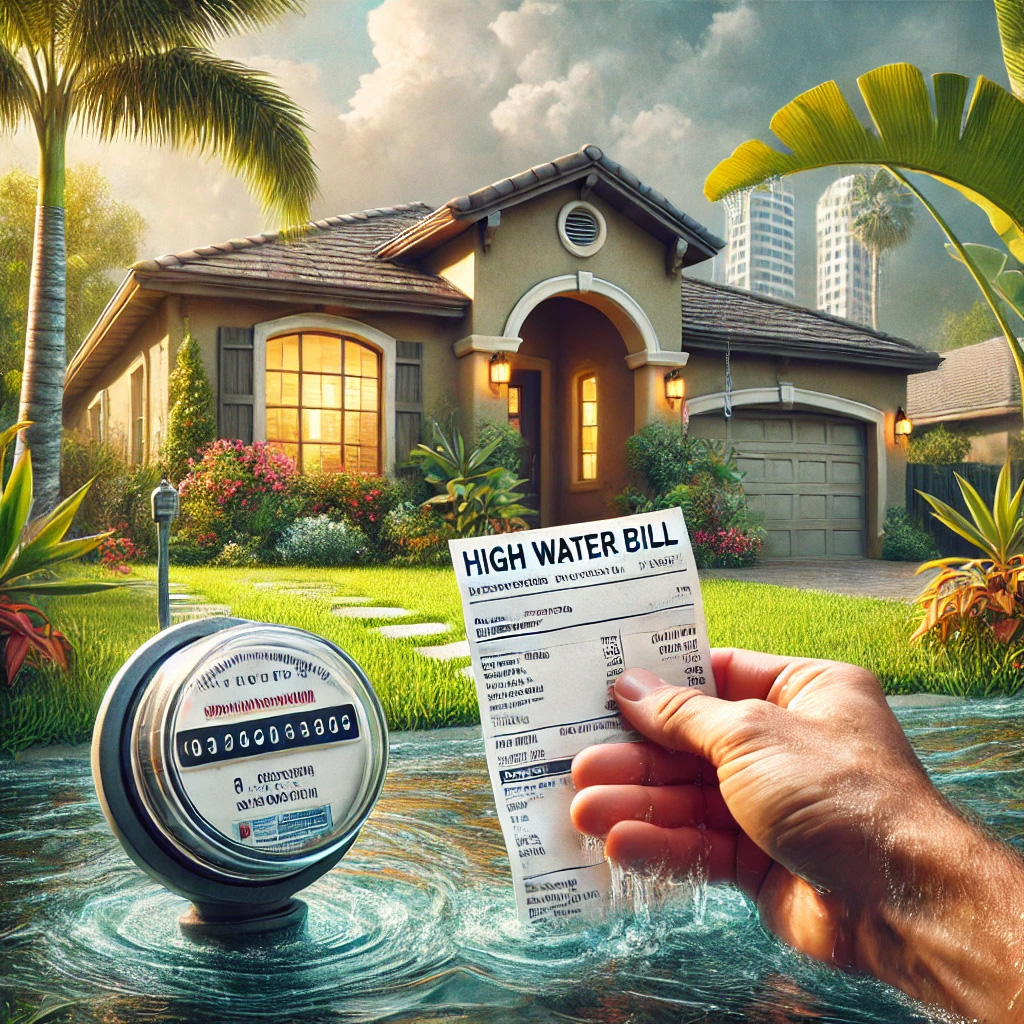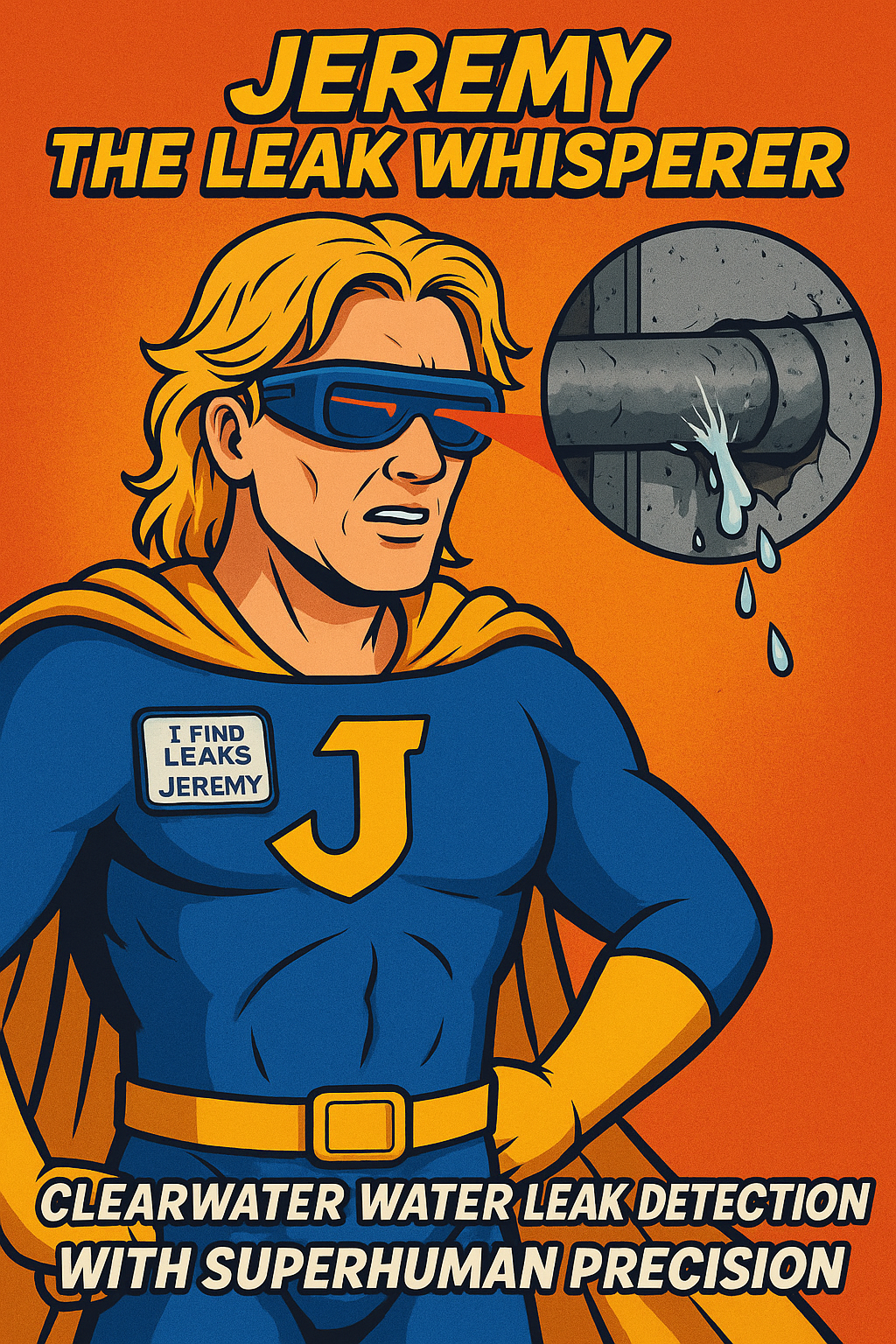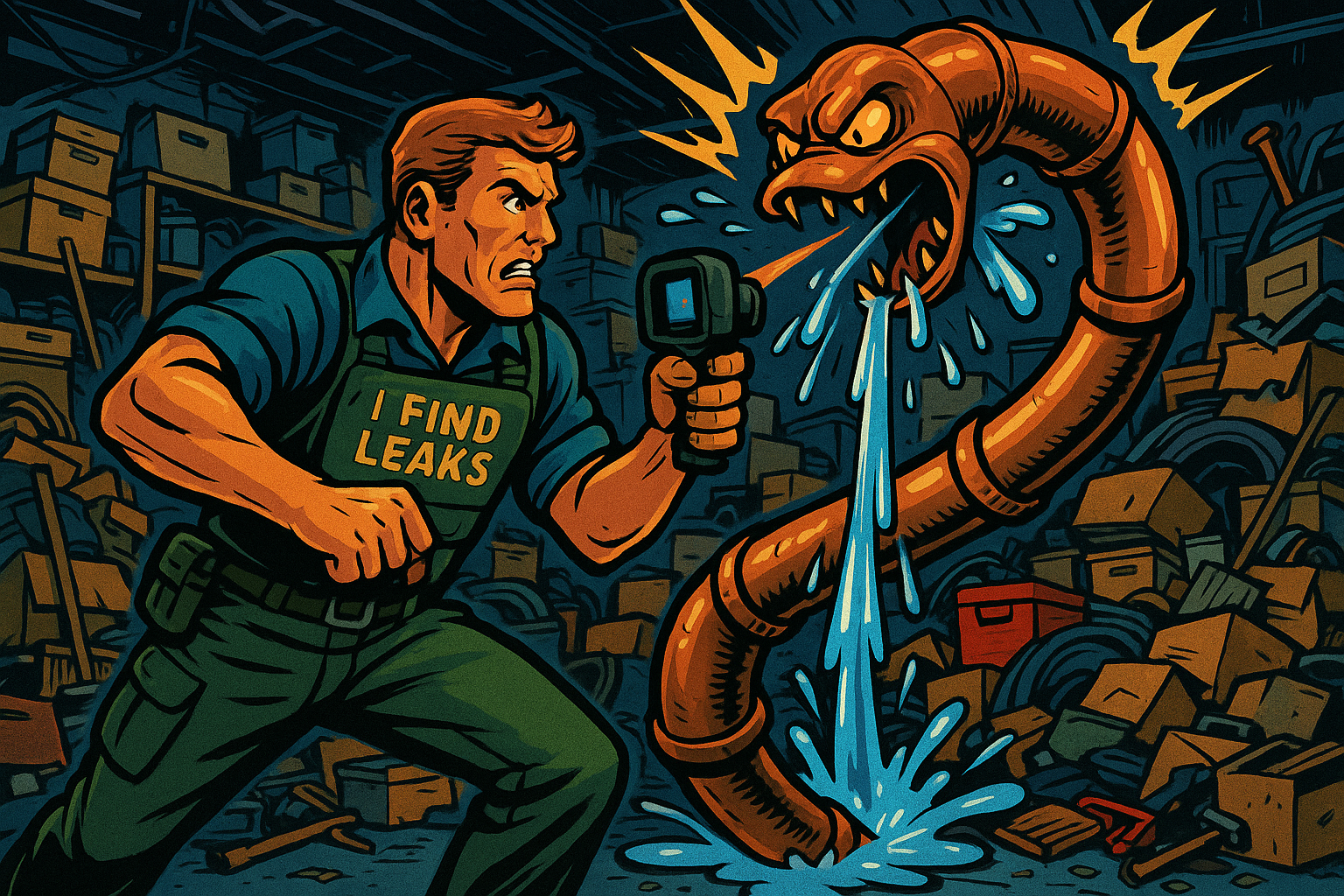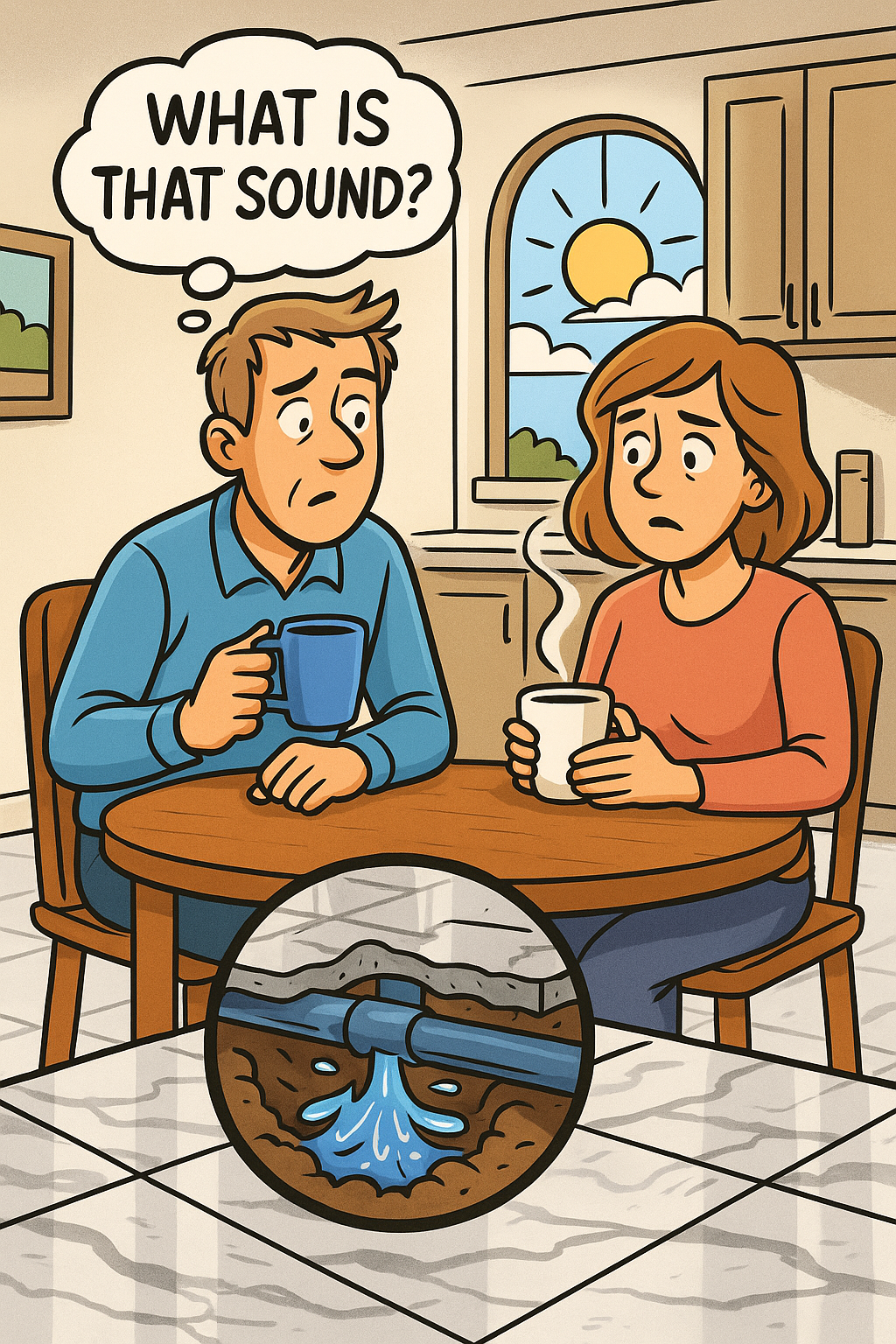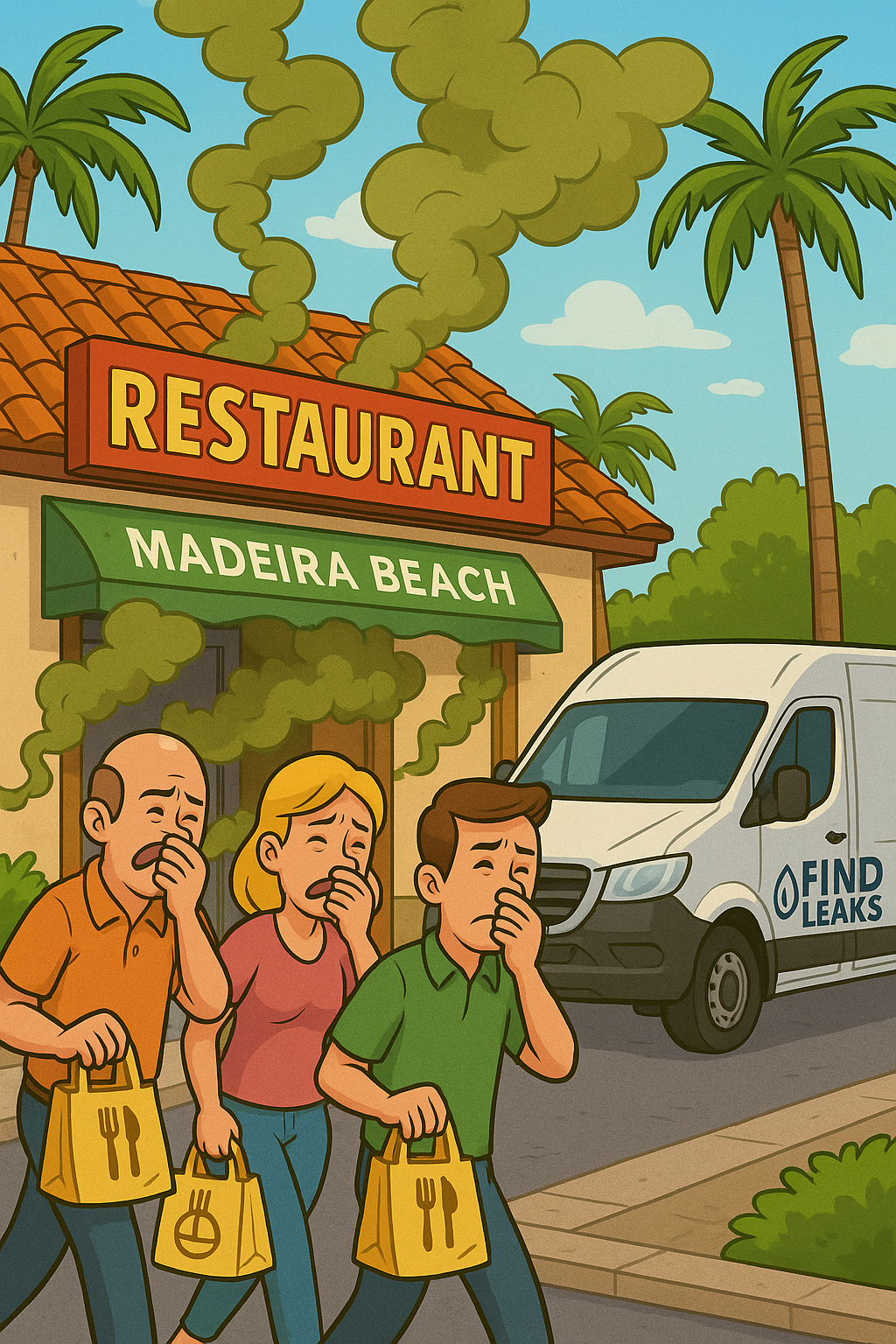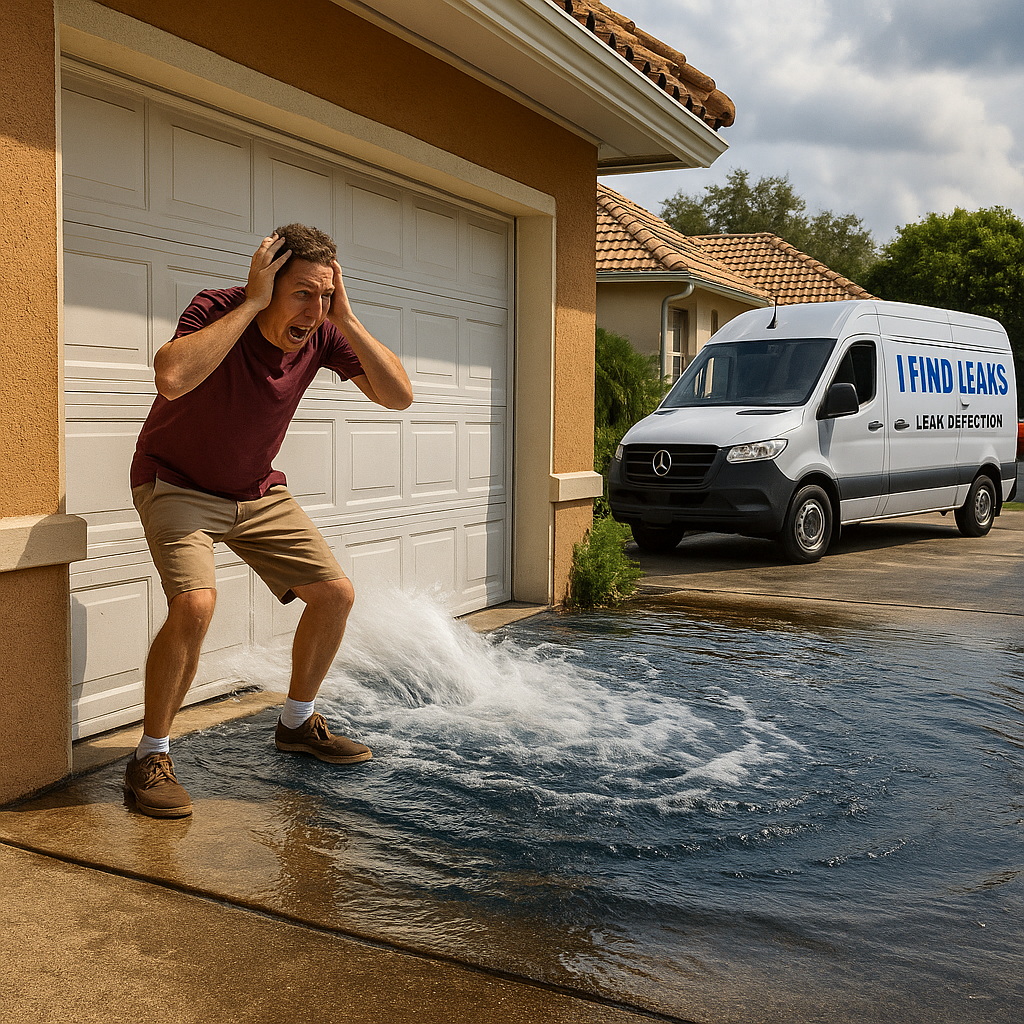Why Your Water Bill is Sky High in Pinellas County (And What Hidden Leaks Might Be to Blame)
Unexpectedly high water bills can be more than just an annoyance—they can signal a deeper issue hiding beneath your home, in your yard, or behind your walls. If you’re in Pinellas County—whether you live in Clearwater, St. Petersburg, Largo, Dunedin, Palm Harbor, Safety Harbor, or Seminole—this guide will help you understand what might be causing the spike and what to do about it.
🚰 Common Reasons for High Water Bills in Pinellas County
While an open faucet or faulty irrigation timer is easy to blame, many high bills come from leaks you can’t see. Here’s a breakdown of potential culprits:
1. Slab Leaks (Hidden Leaks Under Your Home)
Homes in many parts of Pinellas are built on concrete slabs. A leak in the pipes beneath the slab can waste thousands of gallons before there’s any visible sign.
- You’ll hear the sound of running water.
- You may feel warm spots on your floor (hot water line leak).
- You may notice increased humidity or mold near walls or baseboards.
These require professional leak detection using specialized equipment like acoustic sensors or thermal imaging.
2. Faulty Toilet Flappers or Fill Valves
Silent toilet leaks can waste up to 200 gallons a day. A single faulty toilet could add $100–$300 to your monthly bill.
3. Irrigation System Leaks
Underground sprinkler lines can crack, especially in older neighborhoods like Gulfport or Belleair, where shifting soil and root intrusion are common.
4. Underground Service Line Leaks (Between the Meter and the House)
The water line that runs from your water meter to your home is often overlooked—but it’s your responsibility as a homeowner. In areas like Palm Harbor, Largo, and Oldsmar, these underground pipes may be decades old, made of copper, PVC, or even galvanized steel.
If the soil shifts, a tree root intrudes, or the pipe corrodes, water can leak underground for months without any surface signs. You won’t see puddles or damage inside your home—but your meter will spin, and your bill will climb.
Key indicators:
- A constantly moving water meter with all fixtures off
- Mushy spots or patches in the yard
- Drop in water pressure inside the house
This is one of the most common calls we get at I Find Leaks, and it often takes specialized equipment to pinpoint the exact location without digging up the entire yard.
🔧 Why Your Plumbing History Matters: Materials That Leak
Older neighborhoods across Pinellas County were built using different types of plumbing pipes. Some of those materials are prone to leaking today, especially after decades of use.
- Galvanized Steel (pre-1960s): Found in homes in older parts of St. Pete, Gulfport, and Tarpon Springs. Prone to corrosion and internal rust buildup. Leaks develop at joints or inside walls.
- Copper (1960s–1980s): Still widely used but susceptible to pinhole leaks from pitting corrosion. Common in mid-century homes in Seminole and Clearwater. Chloramines in treated water accelerate pipe wear.
- Polybutylene (1978–1995): Often used in homes in Palm Harbor and Largo subdivisions built during this era. These flexible gray pipes fail catastrophically due to chlorine reactions.
- PVC & CPVC (1990s–Present): Often used in newer homes or re-pipes. Still subject to UV degradation, glue joint failure, and freezing in cold snaps.
🏘️ High Water Bills by City: Localized Issues
- Clearwater: Many neighborhoods near Coachman Ridge and Del Oro Groves were built in the 70s–80s with copper. Known for pinhole slab leaks due to age and water chemistry.
- St. Petersburg: Some of the oldest homes in Pinellas. Galvanized and cast iron pipes dominate. Tree roots in sewer laterals are common.
- Largo: Frequent polybutylene piping in 80s developments. High water table leads to frequent slab leaks.
- Dunedin: Mixed plumbing materials. Coastal salt exposure accelerates corrosion.
- Palm Harbor & Safety Harbor: Expansive soils and aging PVC irrigation systems. High incidence of lateral leaks from water meters to homes.
🧪 How to Diagnose a Leak (Before You Call the Pros)
- Check your meter: Turn off all water. Watch the meter. If it moves—you’ve got a leak.
- Test toilets: Put food coloring in the tank. Wait 30 minutes. If color appears in the bowl, there’s a leak.
- Listen and look: Check for hissing, damp drywall, warped flooring.
- Check irrigation zones: Run each zone individually and inspect for bubbling or soggy patches.
🛠️ What To Do If You Suspect a Leak
- Call a Licensed Leak Detection Specialist: Don’t tear up your floors—I Find Leaks uses non-invasive tools to locate hidden leaks accurately and fast.
- Request a Leak Adjustment from Pinellas County Utilities: After the leak is fixed, you may qualify for a partial refund or billing adjustment. Leak Adjustment Form – Pinellas County
- Fix or Replace the Pipe: Leak detection is not the same as repair—but once the leak is marked and exposed, your plumber will know exactly where to go.
💡 Proactive Tips to Avoid High Water Bills
- Install a smart water monitor (like Flume or Moen Flo).
- Inspect your home annually, especially after heavy rains or hurricanes.
- Know your plumbing material and consider repiping if it’s polybutylene or galvanized.
- Fix minor drips immediately—they become major costs over time.
📍 Trust the Local Experts at I Find Leaks
Serving all of Pinellas County, we specialize in non-invasive leak detection for:
- Slab Leaks
- High Water Bills
- Pipe Leaks
- Crawl Space Leaks
- Commercial & Residential
📞 Call today or text us at our Pinellas or Hillsborough line to schedule service. We’ll locate your leak fast—and help keep your water bill from overflowing.
👉 Visit IFindLeaks.com | 400+ 5-Star Reviews | Trusted in Pinellas

